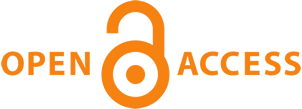Call for Papers: Poverty, Inequality and the Limits of the Welfare State: In Search of a New Social Contract - Vol. 4 No. 2 (2023): June
Poverty has always been on the agenda of social scientists and policymakers, the studies towards understanding and measuring poverty have unfolded its various definitions. The generally accepted definition of poverty on a global scale, “absolute poverty” is the deprivation of basic, essential human needs including shelter, food, safe drinking water, and access to health and livelihood. However, poverty is a multidimensional and complex social phenomenon. It is necessary to go beyond the basic needs approach and address social and economic inequalities in understanding and analyzing poverty within the capitalist economies’ inequality-creating and crises-triggering context.
In understanding the relationship between poverty and structural inequalities, we could draw on the conceptual frames of “intersectionality” and “life course” as they provide a basis for more dynamic analyses. The intersectional inequalities start with the idea that inequality categories, such as gender, class, race, ethnic identity, sexual orientation, and disability, intersect and generate unique processes and consequences. This conceptual approach demands the evaluation of all social categories in relation to each other. Intersectional inequalities always come along with discrimination, social exclusion, and stigmatization. Welfare state policies and institutions are crucial in tackling the intersectional inequalities along the grids of class, gender, race, ethnic identity, age and other relevant categories. In addition, inequalities in a society determine the life course of individuals. For example, starting life as a child laborer can result in vulnerable working conditions in adulthood and precarious retirement in old age. The life course perspective draws attention to the fact that life trajectories happen within a social, political, and economic structure. The life course cannot be explored separately from class and gender dynamics.
In this context, dynamic and interdisciplinary approaches provide researchers with broad conceptual tools for exploring inequalities and poverty-related vulnerabilities experienced by different groups and contribute to developing policy recommendations. It is global phenomenon that the share of the middle and lower classes in economic resources has been gradually decreasing and the household debt burden is increasing. In a context of overlapping crises, insecure livelihoods are becoming more salient. This process requires reimagining a new social contract and rethinking the role of the welfare state and transformative social policies for eradicating deepening poverty and inequalities. As the adverse effects of COVID-19 have been felt around the globe, a need for a new social contract has begun to be discussed extensively in academia and policy circles. Similarly, the impact of the climate crisis and regional conflicts and wars, reveals the significance of both sustainable welfare regimes and interventions on a global scale, especially in responding to the urgent needs of the most vulnerable groups.
In this special issue of Reflektif, contributing papers will address poverty as a multidimensional phenomenon and provide insightful discussion on the deepening inequalities in the context of overlapping crises. Authors are encouraged to consider intersectionality and life course perspectives and adopt an interdisciplinary approach in their discussions of the lived experiences of poverty and inequalities that vulnerable groups (such as women, children, youth, elders, refugees, and the disabled) are exposed to. We also encourage the contributors to address the crisis of the Turkish welfare state from a comparative and historical perspective by looking into the institutional processes, including education, health, and social services and assistance.
The questions that the contributing papers might tackle are as follows:
- What are the different definitions and indicators of poverty and deprivation? How do these diverse definitions identify the struggles against poverty?
- How is it possible to identify diverse inequalities, understand their impact, and alleviate them in Turkey and worldwide?
- What is social exclusion? How does it contribute to understanding inequalities?
- How does intersectionality as a conceptual frame contribute to understanding the multilayered dimensions of poverty and inequality?
- What role does the life course approach can play in demonstrating the different dimensions of poverty and inequality?
- What are the impacts of poverty on different groups - women, children, young people, and the elderly?
- With which conceptual frameworks might we address the poverty and inequalities experienced by NEETs youth?
- What are the various manifestations and dynamics of the “working poor” in Turkey?
- How does a historical analysis shed light on the discussions of poverty and inequality in Turkey?
- What are the adverse outcomes of the COVID-19 pandemic, especially for vulnerable groups?
- What impact does climate change have on disadvantaged and vulnerable groups?
- Is it possible to reimagine a new social contract that responds to deepening poverty and inequalities? What would be the features of such a contract?
Issue Editors: Başak Akkan, Saniye Dedeoğlu, Pınar Uyan Semerci
Deadline for article submissions: April 1, 2022



